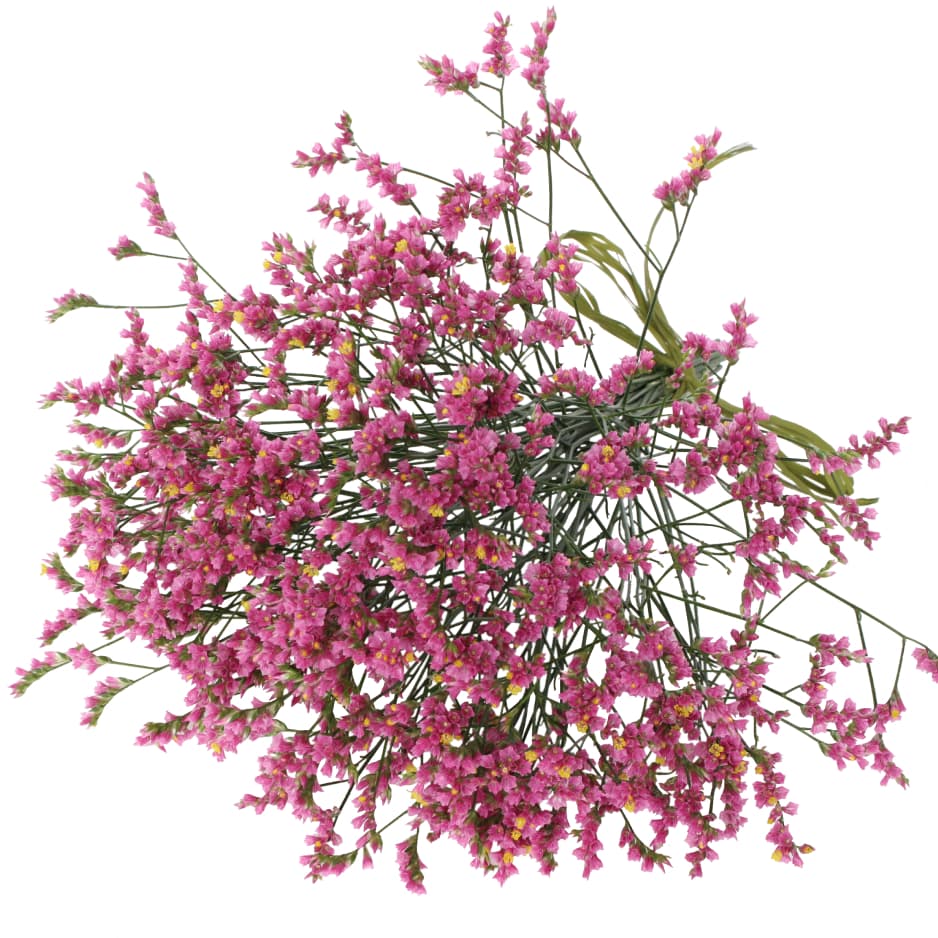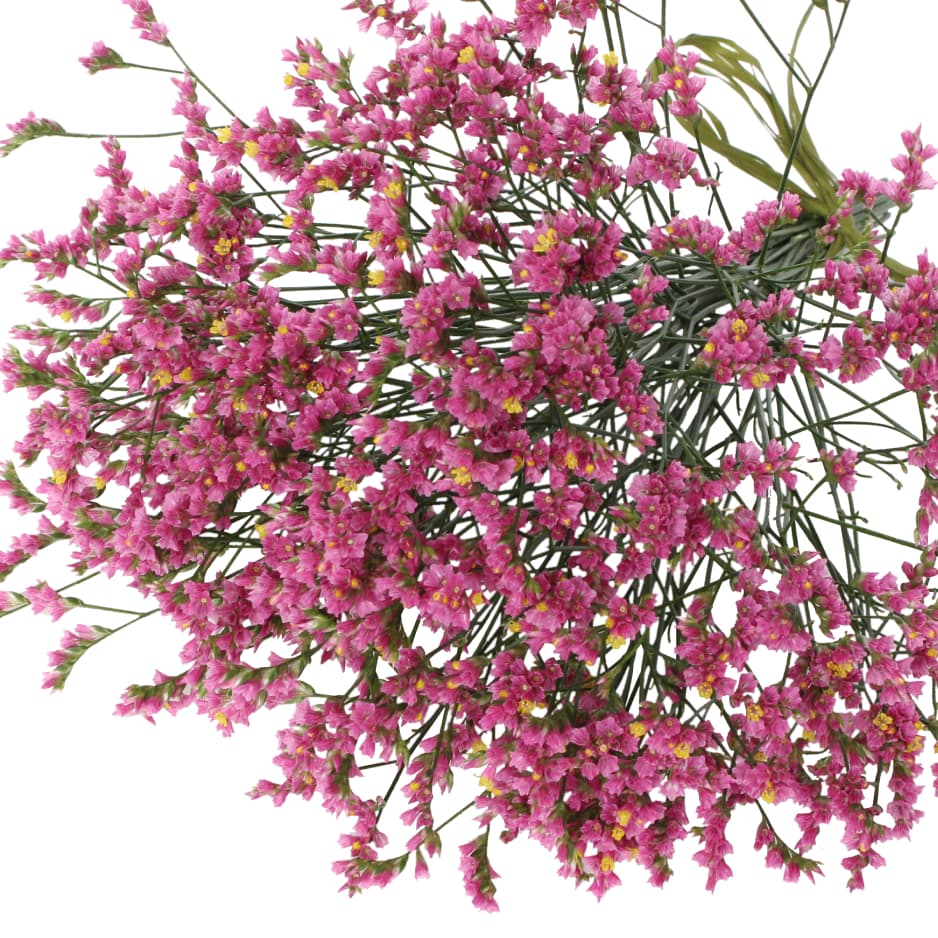Prohibited outside Japan
スターチス ハイブリッド シネンシス
Chino Lovely
Dark peach color, new variety, calyx open well, big brushes and compact, good plants balance, productivity improved compared with other varieties, bolting is also stable at high temperatures.
Information
- Breed Name
- FK17-7
- Breed Number
- Pending
- Technical Name
- Limonium chinensis hybridus
- House Name
- Isofamily of pine trees
- Japanese Name
- タイワンハマサジ
- Country Of Origin
- Cultivated species of origin (interspecies variety)
Price
Mericron seedlings in 7.5cm pots] (Delivery date: March to June) 100 seedlings/35,000 yen (38,500 yen including tax) Mericron seedlings in 7.5cm pots, refrigerated] (delivery in September) 100 seedlings/38,000 yen (41,800 yen including tax)
Feature
Limonium Sinense is a cold-tolerant perennial plant. It has radical leaves growing in clusters at the ground and many flower stalks. The plant height is around 1 m, branched at the top, and many flowers are produced at branch end. The petals are yellow in each variety, and the large calyxes are pigmented and grow densely at branch end. The flowers bloom for long period. It naturally blooms in June and can be cut more than twice in high-altitude areas. In warmer climates, the second flush can be harvested after first flush harvested at early stage. The harvest at one cycle is about 15 cut.
Cultivation Feature
Conventional Sinense is not tolerated by high temperature and dies during summer season, which is required re-plant each year. Limonium Sinense Hybrid is not necessary for replant for several years. It can be grown in a wide range of areas, from warm to highland regions, and once planted, it can be used for production for several years. Cultivation is relatively easy, requiring little labor and no special techniques.
Suitable Place
Sunny, well-drained fields is preferable. Avoid sandy and clayey soils. Soil pH is best in the range of 6 to 6.5 or slightly acidic.
Pests
The most common disease include gray mold and powdery mildew. Keep the greenhouse dry with well ventilation. Be cautious of thrips, spider mites, and cutworm.
Management
Sinuata produces flower buds when young shoots at germination encounter low temperatures. Flower buds do not set on this species until large seedlings (8 to 10 true leaves) are advanced in seedling age. It is a plant with a high demand for low temperatures. When aiming for early flowering by heating the seedlings, if the seedlings are heated too early or exposed to high temperatures too quickly, it may not work well. As a result of our trials, we have found that the plants are exposed to natural cold until early January in warm areas, until the end of December in intermediate areas, and until mid-November in high-cool areas, and then we start heating them. The temperature is not raised all at once, but is gradually increased. The temperature should be 15°C (59°F) at night in the case of super-accelerated production, and 10-12°C (50-70°F) in the normal case. During the daytime, the maximum temperature should be 25°C (77°F). Irrigate the crop whenever it dries out and avoid high humidity as much as possible. When taking the second flower, do not leave the weak branch of the first flower unattended, but cut it off early and apply fertilizer to accelerate the bud burst.
Watering
Planting:
It should be planted in greenhouse. Planting instruction is follows: bed width 1 m, aisles 60 cm. between rows 50 cm, plants 45 cm apart, 2 rows. 2,700 plants/10a. Plant shallow enough to slightly cover with soil and water well.

